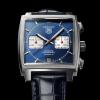-
Posts
1,145 -
Joined
-
Last visited
Reputation Activity
-
 Keith_W reacted to DCooper in HMS Bounty Jolly Boat by DCooper - Artesania Latina - 1:25 - SMALL
Keith_W reacted to DCooper in HMS Bounty Jolly Boat by DCooper - Artesania Latina - 1:25 - SMALL
Progress;
So far so good. Had to use a bit of brown two part epoxy putty to fill some bits at the bow and stern where parts just don't meet up properly. Most of what I'm not happy with is my own sloppy assembly. Not enough dry fitting and thinking ahead. I had to use some extra material to make the foot boards work because I didn't take the time to lay them out properly. Learning all the time and that's a good thing.
Next on the list is to get the rudder fitted and make a start on the masts. I'm really unsure of all this but will forge ahead. I want to do more like what Jay has in his build rather than what the instructions show. I'll need to look over his posts a bit more before I commit to brass and wood.
Still having fun, so much so that I'm thinking about a suitable next kit. Must be small because I need to push though and get it finished. Lots more to do on this one so plenty of time.
Jay - Thanks for the kind words and wonderfully complete build posts. I'm going over them again and again for guidance.
Amfibius - If you find a use for my photos I'd be honoured to be included in any posts you have planned.
Ps. There are only little cut outs on the side of the hull for the oars to sit in. Shouldn't there be some kind of oarlock or at least an edge piece to support the top edge of the hull? Any suggestions or am I just over thinking this.
Thanks for dropping by for a look.
-
 Keith_W got a reaction from DORIS in ROYAL CAROLINE 1749 by Doris - 1:40 - CARD
Keith_W got a reaction from DORIS in ROYAL CAROLINE 1749 by Doris - 1:40 - CARD
I just love your work. Of all the Royal Carolines I have seen, yours is the most "Royal".
-
 Keith_W got a reaction from WackoWolf in HMS Bounty by Captain Al - FINISHED - Artesania Latina - Scale 1:48
Keith_W got a reaction from WackoWolf in HMS Bounty by Captain Al - FINISHED - Artesania Latina - Scale 1:48
Capt, this is why I suggest you practice planking on a more simple boat before attempting the Bounty. It is a difficult kit, one that even experienced modellers may not find easy.
I whipped up a quick diagram in Paint to illustrate:
This shows a plank meeting a bow frame. The bow frame has been tapered to accept the plank. Note how the nails in position (1) and (3) grab on to a tiny amount of wood. You should ideally place the nail in position (2), but if your nails are long they will still exit the wood.
This is why you should be adding material to fill in space in between the frames in front. Needless to say, you need to shape it to conform to the run of planks as well.
What parts do you need to paint or varnish? I can't tell you. Study the plans carefully. Are you going to position your model high up so people might see the underside of the decks? Then you need to finish the underside of your decks (I didn't, since my model is low). Don't just look at my build, there are umpteen others on MSW which are better.
-
 Keith_W reacted to DCooper in HMS Bounty Jolly Boat by DCooper - Artesania Latina - 1:25 - SMALL
Keith_W reacted to DCooper in HMS Bounty Jolly Boat by DCooper - Artesania Latina - 1:25 - SMALL
Pretty simple setup Amfibus.
Ixus 65 point and shoot on a very stable Manfrotto tripod. Camera set for Macro, ISO 80 and under exposed -2/3 plus timed delay to avoid shake. Two white foam core bounce cards to get some light into the shadows under the hull. Then a few post corrections in iPhoto to crop, resize, correct for colour and sharpen the image a touch. I find that iPhoto is a simple way to fix some of the limitations of my simple camera. Would love to upgrade to a DSLR... Maybe someday.
Glad you like the hull so far. I do like taking nice clear photos. IHTH
Dan
-
 Keith_W got a reaction from WackoWolf in ROYAL CAROLINE 1749 by Doris - 1:40 - CARD
Keith_W got a reaction from WackoWolf in ROYAL CAROLINE 1749 by Doris - 1:40 - CARD
I just love your work. Of all the Royal Carolines I have seen, yours is the most "Royal".
-
 Keith_W got a reaction from EricWilliamMarshall in Bounty Launch by KeithW - FINISHED - Model Shipways - SMALL - kitbashed
Keith_W got a reaction from EricWilliamMarshall in Bounty Launch by KeithW - FINISHED - Model Shipways - SMALL - kitbashed
While I am waiting for my planks to dry, I started bending the frames, using the construction jig as a guide. I know that all of us have our own way of bending frames, but I have never seen this method described on MSW or anywhere else, for that matter. It is far from my role to teach you experienced modellers how to suck eggs, but it may be useful for beginners. So here it is, step by step.
Soak the wood for 24 hours, then clamp one end on the frame.
Using a steam iron, press down on the plank for a few seconds. The wood will soften and bend easily.
Once the wood bends, clamp it down before attempting the next curve.
Almost there ...
Finished. Note how tight the plank is to the jig. Leave it to air dry for 24 hours, then remove the clamps.
I believe that this method has quite a few advantages over other plank bending methods:
- you already own the equipment (you do own a steam iron, don't you?),
- pressing the plank between the iron and the jig lessens the risk of breaking the plank,
- very tight bends, and very precise fit can be achieved
- the iron is not as hot as a soldering iron, so it won't scorch the wood
When I removed the clamps, the plank was curved so tightly to the jig that I had to gently pry it off. Anyway, this is where I am up to. Will continue the build log as the model progresses.
-
 Keith_W got a reaction from coxswain in Bounty Launch by KeithW - FINISHED - Model Shipways - SMALL - kitbashed
Keith_W got a reaction from coxswain in Bounty Launch by KeithW - FINISHED - Model Shipways - SMALL - kitbashed
While I am waiting for my planks to dry, I started bending the frames, using the construction jig as a guide. I know that all of us have our own way of bending frames, but I have never seen this method described on MSW or anywhere else, for that matter. It is far from my role to teach you experienced modellers how to suck eggs, but it may be useful for beginners. So here it is, step by step.
Soak the wood for 24 hours, then clamp one end on the frame.
Using a steam iron, press down on the plank for a few seconds. The wood will soften and bend easily.
Once the wood bends, clamp it down before attempting the next curve.
Almost there ...
Finished. Note how tight the plank is to the jig. Leave it to air dry for 24 hours, then remove the clamps.
I believe that this method has quite a few advantages over other plank bending methods:
- you already own the equipment (you do own a steam iron, don't you?),
- pressing the plank between the iron and the jig lessens the risk of breaking the plank,
- very tight bends, and very precise fit can be achieved
- the iron is not as hot as a soldering iron, so it won't scorch the wood
When I removed the clamps, the plank was curved so tightly to the jig that I had to gently pry it off. Anyway, this is where I am up to. Will continue the build log as the model progresses.
-
 Keith_W got a reaction from malmoerik in Bounty Launch by KeithW - FINISHED - Model Shipways - SMALL - kitbashed
Keith_W got a reaction from malmoerik in Bounty Launch by KeithW - FINISHED - Model Shipways - SMALL - kitbashed
While I am waiting for my planks to dry, I started bending the frames, using the construction jig as a guide. I know that all of us have our own way of bending frames, but I have never seen this method described on MSW or anywhere else, for that matter. It is far from my role to teach you experienced modellers how to suck eggs, but it may be useful for beginners. So here it is, step by step.
Soak the wood for 24 hours, then clamp one end on the frame.
Using a steam iron, press down on the plank for a few seconds. The wood will soften and bend easily.
Once the wood bends, clamp it down before attempting the next curve.
Almost there ...
Finished. Note how tight the plank is to the jig. Leave it to air dry for 24 hours, then remove the clamps.
I believe that this method has quite a few advantages over other plank bending methods:
- you already own the equipment (you do own a steam iron, don't you?),
- pressing the plank between the iron and the jig lessens the risk of breaking the plank,
- very tight bends, and very precise fit can be achieved
- the iron is not as hot as a soldering iron, so it won't scorch the wood
When I removed the clamps, the plank was curved so tightly to the jig that I had to gently pry it off. Anyway, this is where I am up to. Will continue the build log as the model progresses.
-
 Keith_W got a reaction from yvesvidal in Bounty Launch by KeithW - FINISHED - Model Shipways - SMALL - kitbashed
Keith_W got a reaction from yvesvidal in Bounty Launch by KeithW - FINISHED - Model Shipways - SMALL - kitbashed
While I am waiting for my planks to dry, I started bending the frames, using the construction jig as a guide. I know that all of us have our own way of bending frames, but I have never seen this method described on MSW or anywhere else, for that matter. It is far from my role to teach you experienced modellers how to suck eggs, but it may be useful for beginners. So here it is, step by step.
Soak the wood for 24 hours, then clamp one end on the frame.
Using a steam iron, press down on the plank for a few seconds. The wood will soften and bend easily.
Once the wood bends, clamp it down before attempting the next curve.
Almost there ...
Finished. Note how tight the plank is to the jig. Leave it to air dry for 24 hours, then remove the clamps.
I believe that this method has quite a few advantages over other plank bending methods:
- you already own the equipment (you do own a steam iron, don't you?),
- pressing the plank between the iron and the jig lessens the risk of breaking the plank,
- very tight bends, and very precise fit can be achieved
- the iron is not as hot as a soldering iron, so it won't scorch the wood
When I removed the clamps, the plank was curved so tightly to the jig that I had to gently pry it off. Anyway, this is where I am up to. Will continue the build log as the model progresses.
-
 Keith_W got a reaction from Captain Slog in Bounty Launch by KeithW - FINISHED - Model Shipways - SMALL - kitbashed
Keith_W got a reaction from Captain Slog in Bounty Launch by KeithW - FINISHED - Model Shipways - SMALL - kitbashed
While I am waiting for my planks to dry, I started bending the frames, using the construction jig as a guide. I know that all of us have our own way of bending frames, but I have never seen this method described on MSW or anywhere else, for that matter. It is far from my role to teach you experienced modellers how to suck eggs, but it may be useful for beginners. So here it is, step by step.
Soak the wood for 24 hours, then clamp one end on the frame.
Using a steam iron, press down on the plank for a few seconds. The wood will soften and bend easily.
Once the wood bends, clamp it down before attempting the next curve.
Almost there ...
Finished. Note how tight the plank is to the jig. Leave it to air dry for 24 hours, then remove the clamps.
I believe that this method has quite a few advantages over other plank bending methods:
- you already own the equipment (you do own a steam iron, don't you?),
- pressing the plank between the iron and the jig lessens the risk of breaking the plank,
- very tight bends, and very precise fit can be achieved
- the iron is not as hot as a soldering iron, so it won't scorch the wood
When I removed the clamps, the plank was curved so tightly to the jig that I had to gently pry it off. Anyway, this is where I am up to. Will continue the build log as the model progresses.
-
 Keith_W reacted to Richard Griffith in Chamfer a plank
Keith_W reacted to Richard Griffith in Chamfer a plank
Some good comments above:
don't bother with a mill, the set up takes more time than using your hands and sanding sticks
don't use rotary drums for final sanding as these create wavy edges
I use sanding sticks with different grits on them, plus a couple of dowels with sand papers glued on
nail files from beauty salons work well for this
After you spile your mating line, just sand a little, trial fit the plank, file a little more, fit again, and you will sneak up to a great fit.
Yes, it takes time, so you have to decide what fit and finish you want and the time it takes to get that fit.
Duff
-
 Keith_W got a reaction from TBlack in Bounty Launch by KeithW - FINISHED - Model Shipways - SMALL - kitbashed
Keith_W got a reaction from TBlack in Bounty Launch by KeithW - FINISHED - Model Shipways - SMALL - kitbashed
While I am waiting for my planks to dry, I started bending the frames, using the construction jig as a guide. I know that all of us have our own way of bending frames, but I have never seen this method described on MSW or anywhere else, for that matter. It is far from my role to teach you experienced modellers how to suck eggs, but it may be useful for beginners. So here it is, step by step.
Soak the wood for 24 hours, then clamp one end on the frame.
Using a steam iron, press down on the plank for a few seconds. The wood will soften and bend easily.
Once the wood bends, clamp it down before attempting the next curve.
Almost there ...
Finished. Note how tight the plank is to the jig. Leave it to air dry for 24 hours, then remove the clamps.
I believe that this method has quite a few advantages over other plank bending methods:
- you already own the equipment (you do own a steam iron, don't you?),
- pressing the plank between the iron and the jig lessens the risk of breaking the plank,
- very tight bends, and very precise fit can be achieved
- the iron is not as hot as a soldering iron, so it won't scorch the wood
When I removed the clamps, the plank was curved so tightly to the jig that I had to gently pry it off. Anyway, this is where I am up to. Will continue the build log as the model progresses.
-
 Keith_W got a reaction from The Sailor in Elsie by 4whelr - Model Shipways
Keith_W got a reaction from The Sailor in Elsie by 4whelr - Model Shipways
Perhaps it would be a nice gesture if someone nearby finished the ship for them as a present to the family?
-
 Keith_W got a reaction from WackoWolf in Elsie by 4whelr - Model Shipways
Keith_W got a reaction from WackoWolf in Elsie by 4whelr - Model Shipways
Perhaps it would be a nice gesture if someone nearby finished the ship for them as a present to the family?
-
 Keith_W got a reaction from NMBROOK in Elsie by 4whelr - Model Shipways
Keith_W got a reaction from NMBROOK in Elsie by 4whelr - Model Shipways
Perhaps it would be a nice gesture if someone nearby finished the ship for them as a present to the family?
-
 Keith_W reacted to DCooper in HMS Bounty Jolly Boat by DCooper - Artesania Latina - 1:25 - SMALL
Keith_W reacted to DCooper in HMS Bounty Jolly Boat by DCooper - Artesania Latina - 1:25 - SMALL
Progress;
Not great and certainly not correct practice but less one little fill plank, done. Learned a lot by doing. Funny how actually working with the materials makes such a difference to understanding what people are saying when the write tutorials. If only I had correctly set out the top two planks I would have had room to use all full planks. But that's what happens when you are learning. Lot of sanding and a bit of filler and I think the hull will look okay. A coat of paint should help hide some sins too. I would do much differently next time but such is life.
Off to bed soon so Santa can come.
Thanks for looking in.
Dan
-

-
 Keith_W got a reaction from WackoWolf in Royal Caroline by marsalv - FINISHED - Panart
Keith_W got a reaction from WackoWolf in Royal Caroline by marsalv - FINISHED - Panart
Your work is first rate, but I would like to see how you achieved such precise results with the tools you have. That way we can learn as well as admire
-
 Keith_W reacted to NMBROOK in Fiber-glassing outer hull anyone? - moved by moderator
Keith_W reacted to NMBROOK in Fiber-glassing outer hull anyone? - moved by moderator
Hi Shawn
I have done this numerous times on RC builds.I have looked at your log to see what you are up against.The stumbling block is the rail being fitted around the deck edge.You need to be able to 'drape' the cloth over the hull.The cloth is left overlong at the deck edge until the resin is 'green'(set but not cured hard) and then trimmed flush.You have two options.
1,You can paint the hull with epoxy resin.This will harden the hull skin and make it impervious to water.This method means a lot last filling and sanding to get a nice finish for paint.If you buy some ZAP finishing epoxy resin and epoxy thinners.Mix the resin as suggested and then add the thinners to produce a water like consistancy.Thoroughly mix it,it will go milky and then clear when thoroughly mixed.Apply the resin to the hull using a paintbrush generously (having masked off everything else)the more you put on,the further it will penetrate into the balsa.Clean the excess off with the brush after a good soak.The cure time for this resin is 3hours,however Epoxy does not stick to itself once fully cured unless you sand it.Therefore leave it for 1 hour and apply another coat with freshly mixed epoxy again thinned.After three coats you may find most of the grain is filed at which point you can the apply more epoxy unthinned.Two more coats again at one hour intervals should give you enough build for 'knocking back' with glasspaper.Do not attempt to sand the hull for at least 48hrs.This gives the epoxy plenty of time to harden up,otherwise your glasspaper will just clog in a few strokes.It is a case of a thorough sanding and fill the low spots with car body filler.Make sure all low spots are keyed before applying filler.Looking at your build,I would also coat the interior with a couple of thin coats of resin to seal everything further because you will get some water in the hull during sailing.
2.A little different in that you use laminating resin instead.This involves cutting the 'chines' form glassfibre mat.I wouldn't use chop strand mat or tissue,but use fine woven glass fibre cloth.This is used by aircraft modellers to 'hard skin' balsa wings and fuselages.Cut the four chines out of the mat using scissors.You need to have made cardboard templates first.When applying the epoxy mix as directed(no thinning) and apply to the hull.I would work on one section at a time as you get less worktime with this resin and you haven't done it before.After applying resin for one panel(don't put loads on because you will only end up removing it)lay the cloth on the section.Then using an old bank card and making sure you hold the cloth so it doesn't move,Scrape along the surface similar to using a cabinet scaper.This 'forces' the cloth through the resin film.Keep repeating this operation with light pressure stroking the cloth to force out air bubbles and wipe away the resin build up that appears as you do this.After this resin goes tacky,but not hard,apply a further coat of freshly mixed resin without cloth.This is to avoid breaking through into the mat when sanding.Sand the hull being careful not to expose the cloth.Any low spots will need filling as before.
Hope this gives you a little insight as to whats required.Personally I would go with option one and see how 'hard' the hull becomes.When sanded you can always apply option 2 over the top.Option one is easier if you have never done it before.
One last note,ensure wherever you work is at least 16 deg c when you do this.Epoxy will lay dormant and not cure at temperatures below this.
Kind Regards Nigel
-
 Keith_W got a reaction from The Sailor in J-class yacht Endeavour 1934 by The Sailor - Amati - 1:35
Keith_W got a reaction from The Sailor in J-class yacht Endeavour 1934 by The Sailor - Amati - 1:35
Wow, I just saw this today. What a beautiful yacht! I would hesitate to build one, because I won't have anywhere to put it!
-
 Keith_W got a reaction from texxn5 in Wasa by md1400cs - FINISHED - Corel - 1:75
Keith_W got a reaction from texxn5 in Wasa by md1400cs - FINISHED - Corel - 1:75
Well done! I very nearly pulled the trigger on this machine today. I would like to see more posts like this one, where you show how you use your machine. It might push me over the edge
-
 Keith_W got a reaction from WackoWolf in Wasa by md1400cs - FINISHED - Corel - 1:75
Keith_W got a reaction from WackoWolf in Wasa by md1400cs - FINISHED - Corel - 1:75
Well done! I very nearly pulled the trigger on this machine today. I would like to see more posts like this one, where you show how you use your machine. It might push me over the edge
-
 Keith_W reacted to usedtosail in HMS Bounty Launch by usedtosail - FINISHED - Model Shipways - 1:16
Keith_W reacted to usedtosail in HMS Bounty Launch by usedtosail - FINISHED - Model Shipways - 1:16
Some more progress. I sanded the taper into the stem then cut out the rabbet on the stem and keel. This kit made this tricky operation easier by not only providing the rabbet and bearding lines on the stem and keel pieces, but these lines were actually scored into the wood. I then just had to deepen the scores with an X-Acto blade and cut out the material between the lines with the X-Acto chisel. I used a short Emory board to clean up the slot:
BTW, that narrow chisel blade came with a knife set but I have not been able to find replacements. The standard X-Acto chisel blades are much wider. If anyone knows a source for those blades, please let me know.
When I was happy with the rabbet on both sides, I fit and glued the molds to the false keel. I used magnets to hold false keel and the molds, and Lego blocks to make sure the molds were square to the false keel. The keel assembly is just resting on the false keel for now. As per the instructions, I also made sure the tops of the molds and the false keel were flush with the table:
Any suggestions or other comments will be greatly appreciated. Thanks.
-
 Keith_W reacted to NMBROOK in Linisher
Keith_W reacted to NMBROOK in Linisher
I used to use one daily where I used to work.It was used for cleaning edges on steel plates!!!!Personally I think the large belt may be a bit overkill for modelling as I wouldn't describe it as an accurate tool.Whenever I shaped wood on ours,even just reshafting a hammer,it had a bad habit of burning the wood.The disc sander yes,but I would only use the belt for the roughest of jobs.
Kind Regards Nigel
-
 Keith_W reacted to michael mott in Linisher
Keith_W reacted to michael mott in Linisher
I have one that I never used much, the belt wandered a bit and they were expensive mine was a pedestal model a craftsman. I cannot remember how I came by it even The disc sander is ok, however I did not like the way the table was mounted (basically a shaft sticking out of the cast base. I prefer a more solid table. I used it for rough work when I did used it. The drums at each end of the belt part are slightly barreled in shape to keep the belt centered.
I converted mine to a pedestal table that has a bench grinder and at one end and a wire wheel and buffing wheel at the other I took off the disc.
Not a very positive recommendation for sure, but they are useful for some applications I would not recommend it for modelmaking though, it is a bit of a brute.
This is of course just my opinion, I am sure there are those who use them all the time for general woodwork.
Michael





.thumb.jpeg.fc5d633a7b34428fcf19419a73d56d55.jpeg)





